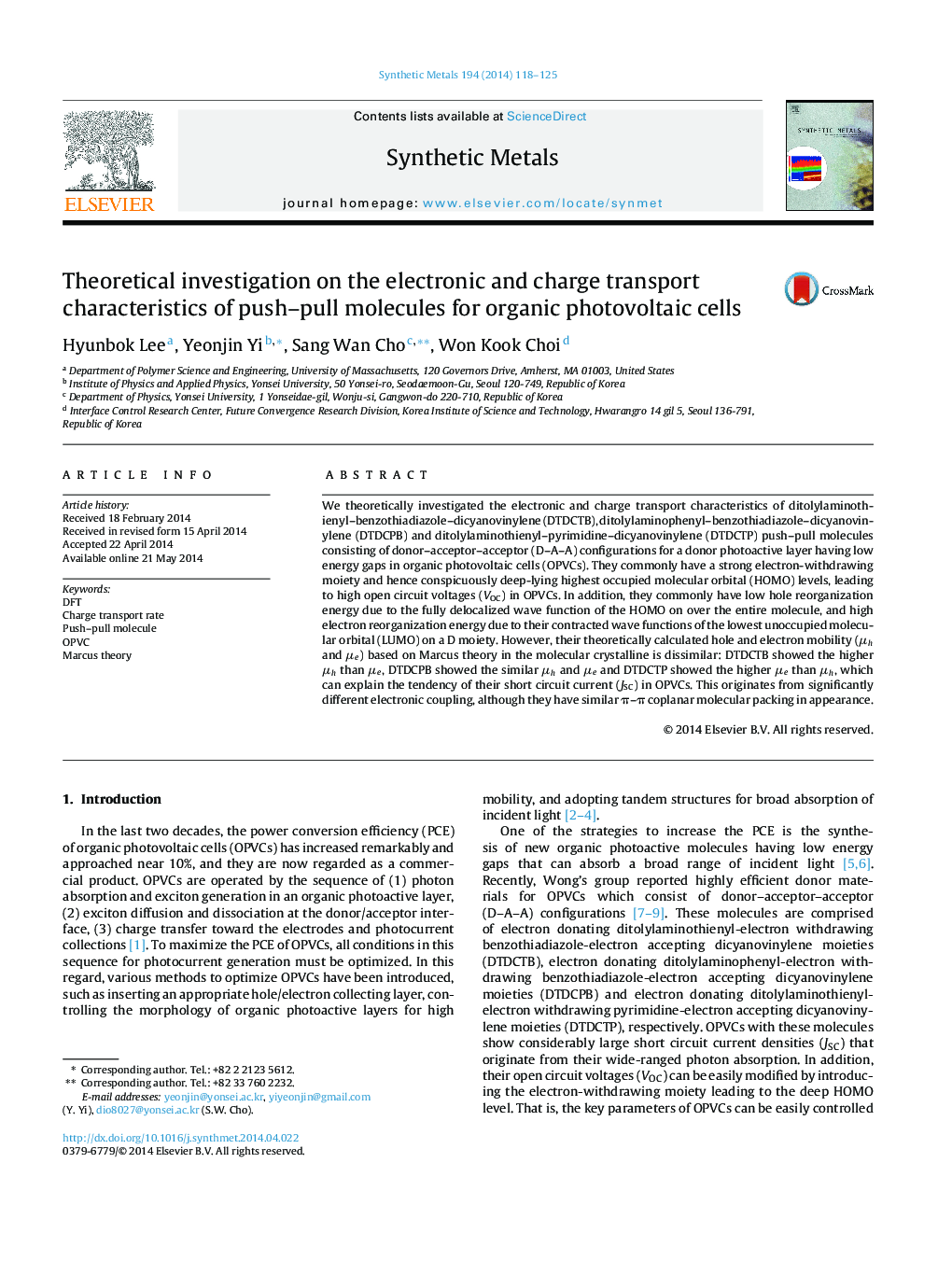| Article ID | Journal | Published Year | Pages | File Type |
|---|---|---|---|---|
| 1440875 | Synthetic Metals | 2014 | 8 Pages |
•Theoretical investigation on push–pull molecules was conducted.•They commonly have deep-lying highest occupied molecular orbital level.•They commonly have low hole reorganization energy.•However, they have significantly different intermolecular electronic coupling.•As a result, only DTDCTB exhibits superior hole mobility than electron mobility.
We theoretically investigated the electronic and charge transport characteristics of ditolylaminothienyl–benzothiadiazole–dicyanovinylene (DTDCTB), ditolylaminophenyl–benzothiadiazole–dicyanovinylene (DTDCPB) and ditolylaminothienyl–pyrimidine–dicyanovinylene (DTDCTP) push–pull molecules consisting of donor–acceptor–acceptor (D–A–A) configurations for a donor photoactive layer having low energy gaps in organic photovoltaic cells (OPVCs). They commonly have a strong electron-withdrawing moiety and hence conspicuously deep-lying highest occupied molecular orbital (HOMO) levels, leading to high open circuit voltages (VOC) in OPVCs. In addition, they commonly have low hole reorganization energy due to the fully delocalized wave function of the HOMO on over the entire molecule, and high electron reorganization energy due to their contracted wave functions of the lowest unoccupied molecular orbital (LUMO) on a D moiety. However, their theoretically calculated hole and electron mobility (μh and μe) based on Marcus theory in the molecular crystalline is dissimilar: DTDCTB showed the higher μh than μe, DTDCPB showed the similar μh and μe and DTDCTP showed the higher μe than μh, which can explain the tendency of their short circuit current (JSC) in OPVCs. This originates from significantly different electronic coupling, although they have similar π–π coplanar molecular packing in appearance.
